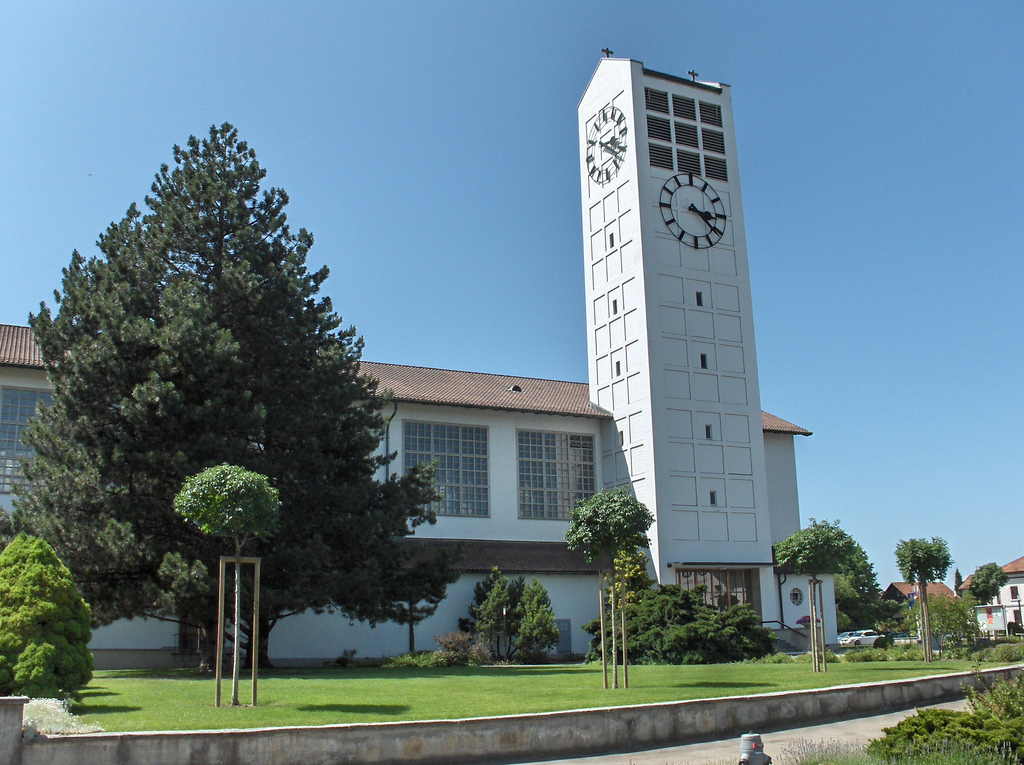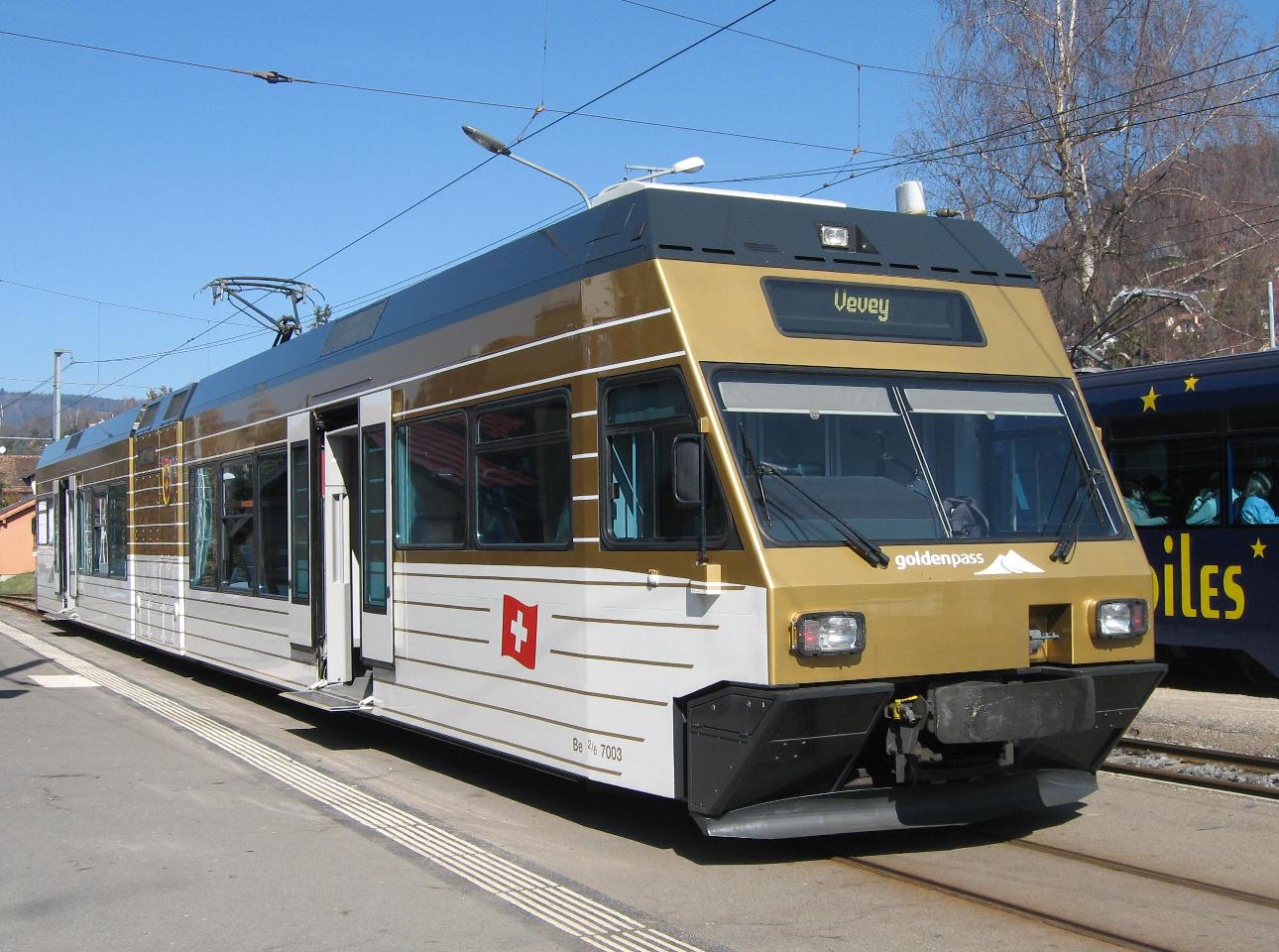|
Sulgen–Gossau Railway
The Sulgen–Gossau railway (SG) is a standard gauge railway in the Swiss cantons of St. Gallen and Thurgau, which was built by the ''Bischofszellerbahn'' (Bischofszell Railway) and the railway is also known by that name. Its , standard gauge line has belonged to the Swiss Federal Railways (SBB) since 1902. History After an evaluation of routes, the Bischofszell Railway decided on a route from Gossau via Bischofszell to Sulgen in Thurgau. The other possible route was Uzwil–Bischofszell–Amriswil. Since in the second option would not have benefitted the town of St. Gallen and would have lost significant potential traffic, the Bischofszell Railway decided on the Gossau–Sulgen route. It was the first line between St. Gallen and the Thur valley. The railway line was leased in 1875 by the Swiss Northeastern Railway (''Schweizerische Nordostbahn''; NOB) and passed into its ownership on 31 July 1885. The railway took over operations on the Sulgen–Bischofszell section on 1 Feb ... [...More Info...] [...Related Items...] OR: [Wikipedia] [Google] [Baidu] |
Sulgen
Sulgen is a municipality in Weinfelden District in the canton of Thurgau in Switzerland. Geography Sulgen has an area, , of . Of this area, or 67.0% is used for agricultural purposes, while or 12.9% is forested. Of the rest of the land, or 18.6% is settled (buildings or roads), or 0.3% is either rivers or lakes and or 0.8% is unproductive land.Swiss Federal Statistical Office-Land Use Statistics 2009 data accessed 25 March 2010 Of the built up area, industrial buildings made up 10.1% of the total area while housing and buildings made up 2.5% and transportation infrastructure made up 0.4%. while parks, green belts and sports fields made up 4.9%. Out of the forested land, all of the forested land area is covered with heavy forests. Of the agric ... [...More Info...] [...Related Items...] OR: [Wikipedia] [Google] [Baidu] |
Amriswil
, neighboring_municipalities= Egnach, Erlen, Hefenhofen, Muolen (SG), Salmsach, Sommeri, Zihlschlacht-Sitterdorf , twintowns = Amriswil ( Low Alemannic: ''Amerschwiil'') is a town and a municipality in Arbon District in the canton of Thurgau in Switzerland near the Lake Constance. The official language of Amriswil is (the Swiss variety of Standard) German, but the main spoken language is the local variant of the Alemannic Swiss German dialect. History Amriswil is first mentioned in 799 as ''Amalgeriswilare''. During the Middle Ages Amriswil and Brüschwil were part of a Bishop's fief. During the 15th Century, the Helmsdorf family ruled in Eppishausen. In the early 17th Century, the village of Amriswil was sold to Adam Tschudi of Glarus, and in 1665 the hospital was sold to St. Gallen. The court rights over Amriswil, Hölzli, Brüschwil and houses in Ruti and Giezenhaus were acquired by the city of Bürglen, which was under the control of the city of St. Gallen. ... [...More Info...] [...Related Items...] OR: [Wikipedia] [Google] [Baidu] |
Standard Gauge Railways In Switzerland
Standard may refer to: Symbols * Colours, standards and guidons, kinds of military signs * Standard (emblem), a type of a large symbol or emblem used for identification Norms, conventions or requirements * Standard (metrology), an object that bears a defined relationship to a unit of measure used for calibration of measuring devices * Standard (timber unit), an obsolete measure of timber used in trade * Breed standard (also called bench standard), in animal fancy and animal husbandry * BioCompute Standard, a standard for next generation sequencing * ''De facto'' standard, product or system with market dominance * Gold standard, a monetary system based on gold; also used metaphorically for the best of several options, against which the others are measured * Internet Standard, a specification ratified as an open standard by the Internet Engineering Task Force * Learning standards, standards applied to education content * Standard displacement, a naval term describing the weig ... [...More Info...] [...Related Items...] OR: [Wikipedia] [Google] [Baidu] |
Railway Lines In Switzerland
Rail transport (also known as train transport) is a means of transport that transfers passengers and goods on wheeled vehicles running on rails, which are incorporated in tracks. In contrast to road transport, where the vehicles run on a prepared flat surface, rail vehicles (rolling stock) are directionally guided by the tracks on which they run. Tracks usually consist of steel rails, installed on sleepers (ties) set in ballast, on which the rolling stock, usually fitted with metal wheels, moves. Other variations are also possible, such as "slab track", in which the rails are fastened to a concrete foundation resting on a prepared subsurface. Rolling stock in a rail transport system generally encounters lower frictional resistance than rubber-tyred road vehicles, so passenger and freight cars (carriages and wagons) can be coupled into longer trains. The operation is carried out by a railway company, providing transport between train stations or freight customer facilit ... [...More Info...] [...Related Items...] OR: [Wikipedia] [Google] [Baidu] |
SBB-CFF-FFS Re 420
The Re 420, originally (and still widely called) Re 4/4II, series are the most common electric locomotives of the Swiss Federal Railways. They are used for passenger services throughout Switzerland alone or in pairs. For freight services, they are sometimes paired with the Re 620, especially in mountainous regions. That pairing is referred to by the term Re 10/10. The Re 430, originally known as the Re 4/4III, are a derivative of the Re 420 modified for higher traction but lower speed. The Re 420 locomotives were produced over a period of 21 years, from 1964 to 1985. Re 4/4III (Re 430 SBB/Re 436 Private) Subseries: When Südostbahn had the opportunity to buy one of the first batch of 50 Re 4/4II locomotives before delivery, it had the gear modified for higher traction and lower speed for the steep routes of the SOB. This locomotive was delivered as number 41 (and is now SBB 11350). Based on the SOB experience, the SBB ordered a batch of 20 Re 4/4III in 1969 for use on the Gott ... [...More Info...] [...Related Items...] OR: [Wikipedia] [Google] [Baidu] |
Stadler GTW
The Stadler GTW is an articulated railcar for local transport made by Stadler Rail of Switzerland. GTW stands for Gelenktriebwagen (articulated railcar). History The Biel–Täuffelen–Ins-Bahn near Bern, Switzerland was looking for a lighter train model to replace its aging fleet, so that a low floor system does not require heavy installations on the roof. Based on that requirement Stadler came up with a concept of placing most of the equipment in a central unit between the seating cars. While the BTI-Bahn tracks are meter gauge, Stadler presented the first prototype in 1995 set on standard gauge rails, and the Mittelthurgau-Bahn tested three prototypes on its standard gauge network during 1996. The rolling stock for Mittelthurgau was later expanded to 10 GTW 2/6 (built 1998–1999) that are now part of the THURBO fleet (the three prototypes were sold to Italy). The next lots were produced in meter gauge, and were delivered to the BTI-Bahn and the CEV-Bahn (Chemins de fer éle ... [...More Info...] [...Related Items...] OR: [Wikipedia] [Google] [Baidu] |
SBB-CFF-FFS Ae 6/6
The Ae 6/6 is a heavy electric locomotive used by the Swiss Federal Railways (SBB-CFF-FFS). It is sometimes also referred to as ''canton locomotive'' ("Kantonslokomotive"), because the first 25 locomotives were named after the cantons, and carried the canton's coat of arms on the side and chrome embellishments (a single raised stripe on each side and three raised stripes on each end), and the Swiss coat of arms on the front, between the chrome stripes. These adornments made them internationally famous. The other 95 locomotives received the names of capital cities of Swiss cantons, and other towns and cities, but without the chrome embellishments. The namings were held as ceremonies in the respective cities. A less appealing moniker is ''Schienenwolf'' ("railroad plough") as the three axle bogie construction stresses heavily the tracks. Originally designed for heavy services on the Gotthard route, as many Swiss locomotives were, the Ae 6/6 was one of the classic ''Gotthard loco ... [...More Info...] [...Related Items...] OR: [Wikipedia] [Google] [Baidu] |
Hauptwil-Gottshaus
Hauptwil-Gottshaus is a municipality in Weinfelden District in the canton of Thurgau in Switzerland. The municipality was created in 1996 by a merger of Hauptwil and Gottshaus. The Wakker Prize was bestowed on Hauptwil in 1999 for the preservation of its architectural heritage. History Hauptwil was first mentioned in 1413 as ''Hoptwill''. Gottshaus was first mentioned in the second half of the 13th century. Hauptwil By no later than 1377 Hauptwil was part of the fief granted by the Bishop of Constance and the Abbey of St. Gall to Welter von Blidegg of the Ryff family. In 1561 it went to the Freiherr von Hallwyl. Then, between 1664 and 1798 it was owned by the Gonzenbach family, who by 1600 already owned several properties and held the low justice right in Hauptwil. The Catholic part of the population has always belonged to the parish of Bischofszell. Reformed services were held at the castle chapel by 1667 by the Gonzenbach family for the village. The Reformed chapel be ... [...More Info...] [...Related Items...] OR: [Wikipedia] [Google] [Baidu] |
Weinfelden
Weinfelden is a Municipalities of Switzerland, municipality in the Cantons of Switzerland, canton of Thurgau in Switzerland. It is the capital of the district of the same name. Weinfelden is an old town, which was known during Ancient Rome, Roman times as Quivelda (Winis Feld). Weinfelden is mostly known throughout Switzerland for its hockey team, HC Thurgau which is currently playing in the Swiss League. History Already in the year 124 AD, there was a Roman bridge over the Thur (Switzerland), Thur in Weinfelden. The name ''Weinfelden'' appears the first time in a document from 838. Weinfelden was by far the biggest town in the canton of Thurgau. In 1798, Paul Reinhart (Swiss politician), Paul Reinhart and his committee led the area to freedom from the domination of the ''Eidgenossen''. In 1803, Thurgau became an independent canton, through the mediation of Napoleon, with Frauenfeld as capital. In 1830, Thomas Bornhauser spoke to a large crowd in Weinfelden, demanding a libe ... [...More Info...] [...Related Items...] OR: [Wikipedia] [Google] [Baidu] |


